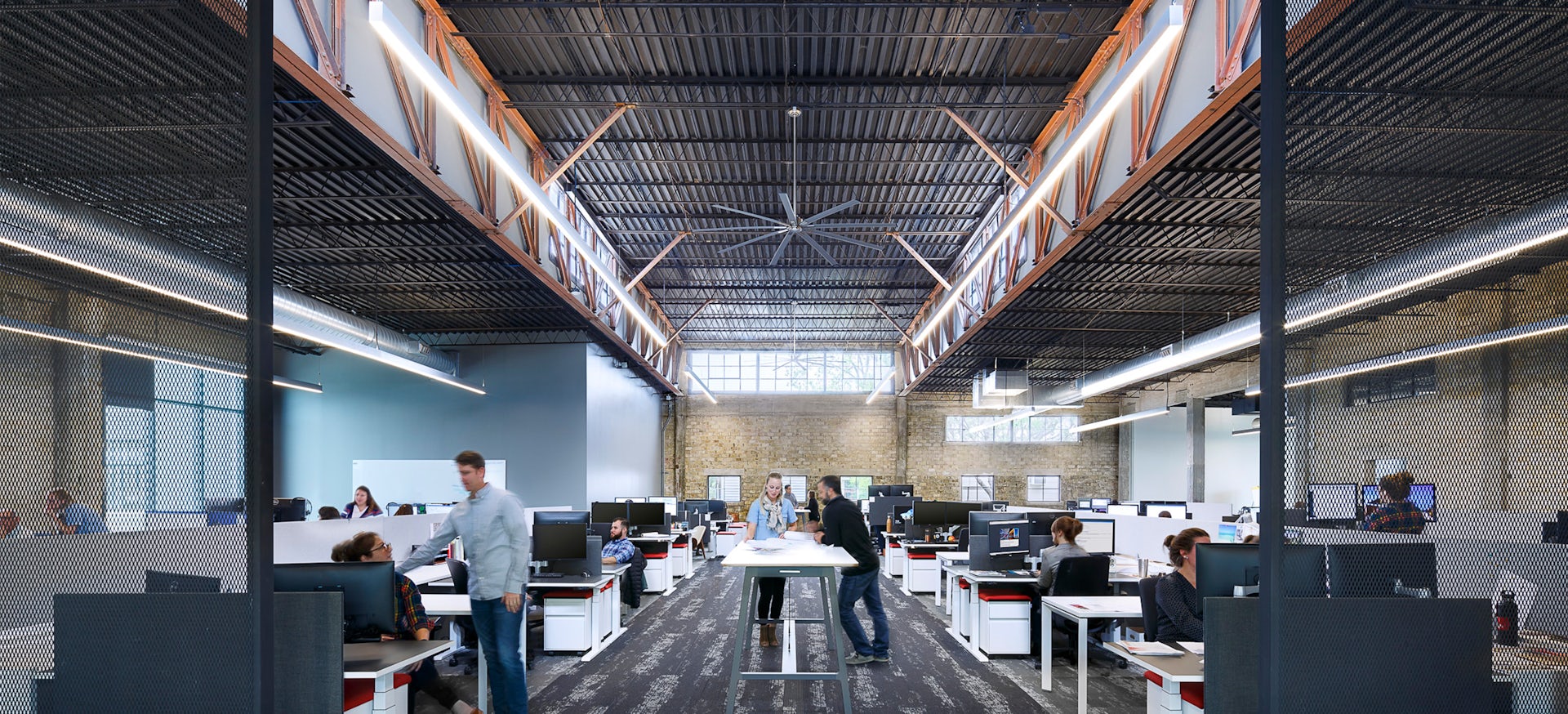The design of LPA’s San Antonio studio earned a COTE Award at the AIA San Antonio chapter’s annual design awards, staged virtually on Oct. 22. LPA Principal Mark Oppelt received the chapter’s highest honor — The Legacy Award — which recognizes an AIA San Antonio member for “a lifetime of distinguished leadership and dedication to architecture, the profession and the community.”
“Early on, Mark was a visionary thinker about school design and construction,” said LPA Principal Mickey Conrad, who has worked with Mark for decades. “He was thinking out of the box with the way schools were organized to create places for kids, not just an institutional corridor, but placemaking in schools.”
Oppelt’s nomination highlighted his contribution to educational design in Texas, career-long commitment to environmental stewardship and exceptional leadership. As a young architect, Oppelt pushed local school districts to step outside of their comfort zone and consider the importance of sustainability and energy reduction decades before the industry made it a priority. His first projects received national recognition from the AIA for recognizing the importance of sustainability and leveraging the technology of earth berms to regulate the temperature of a building. Oppelt would later pioneer many of the building technologies, spatial arrangements and educational paradigms common in school environments today.
AIA San Antonio Honors LPA with COTE Award; Mark Oppelt Receives Legacy Award

“Mark has really impacted the K-12 community of San Antonio and our surrounding school districts,” LPA Studio Director Sara Flowers said. “He has really taken great care and understanding on how buildings should occupy a site, what the orientation should be and how we can create really great spaces for both faculty, staff and our students to learn in.”
LPA transformed a 10,300-square-foot vacant retail space into a LEED-Platinum, collaborative sustainable work environment for its San Antonio studio. The design of the was recognized with a COTE award for executing a holistic vision of design excellence, supporting human health and vibrant communities, and ecological resilience, as defined by the COTE Top 10 Toolkit, according to the chapter.
“This is a great example of how to do excellent adaptive reuse,” jurors said. “LPA was honored this year for being one of the few firms to meet the AIA 2030 Commitment for all of their projects. It’s great to see them doing it for themselves and holding themselves accountable.”
The studio’s design exceeded the AIA 2030 Commitment benchmark by reducing energy use by 81 percent. The design includes a 43 kw photovoltaic system, natural lighting, 100 percent LED lighting fixtures with controls, energy monitoring and innovative air quality and water strategies. The PV system offsets more than 50 percent of the total energy use. A large percentage of the existing walls, flooring and ceiling were reused, achieving LEED Interiors Life-Cycle Impact Reduction standards.

The jurors cited how this project could be an example of how the industry should develop cities. They emphasized that there are many abandoned buildings in important corridors across the country and LPA’s San Antonio studio should be a model for how to thoughtfully redevelop a neighborhood. [AT1]
“What is really inspiring about this project is that we really need to do more with our existing buildings,” the jurors commented. “It’s great to see such a well-considered and well-crafted project on this part of a thoroughfare and thinking about these urban gestures by putting a plaza in the foreground and putting the parking in the background.”
Last year, the studio was named Green Project of the Year by the San Antonio Business Journal.
The full list of winning projects can be found on the AIA San Antonio website.














